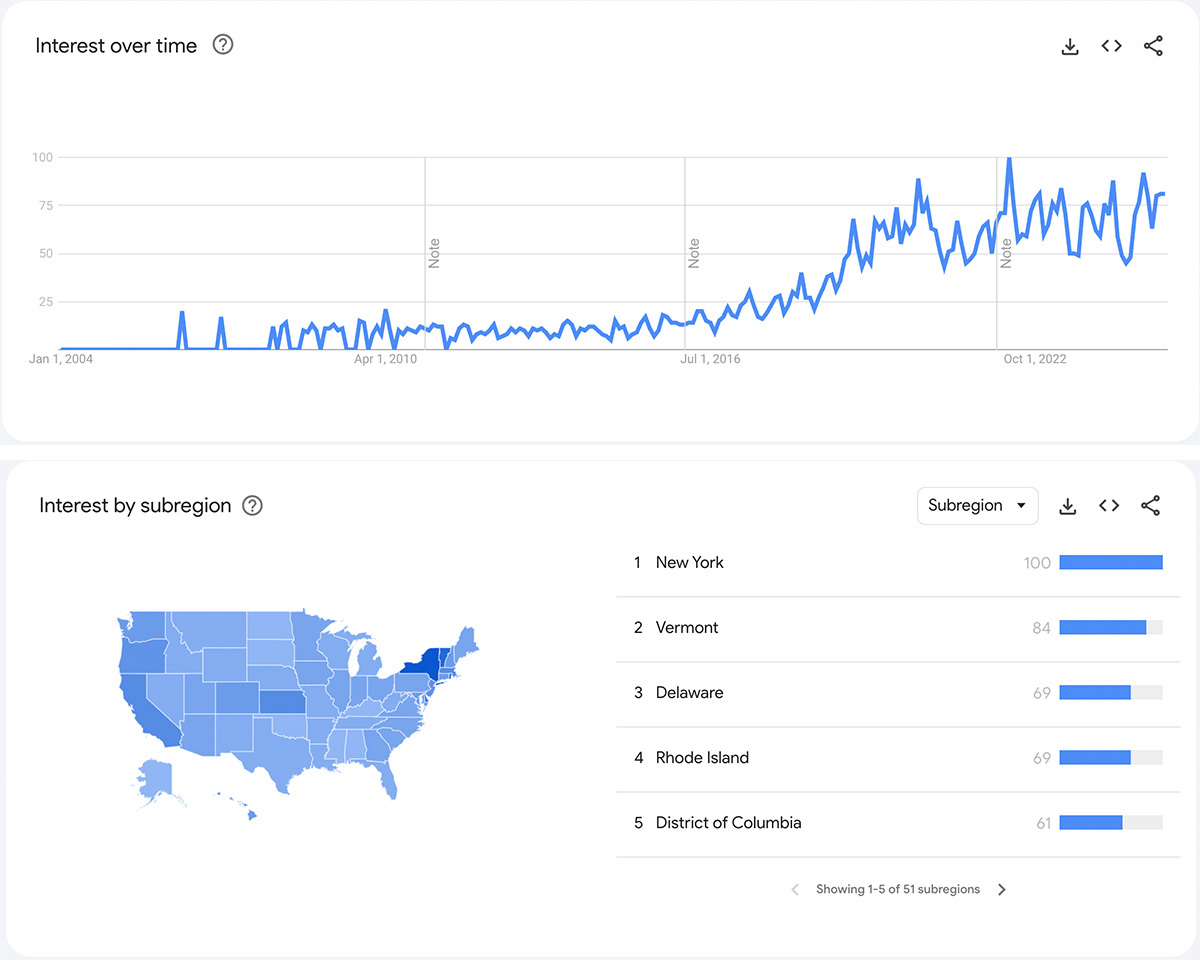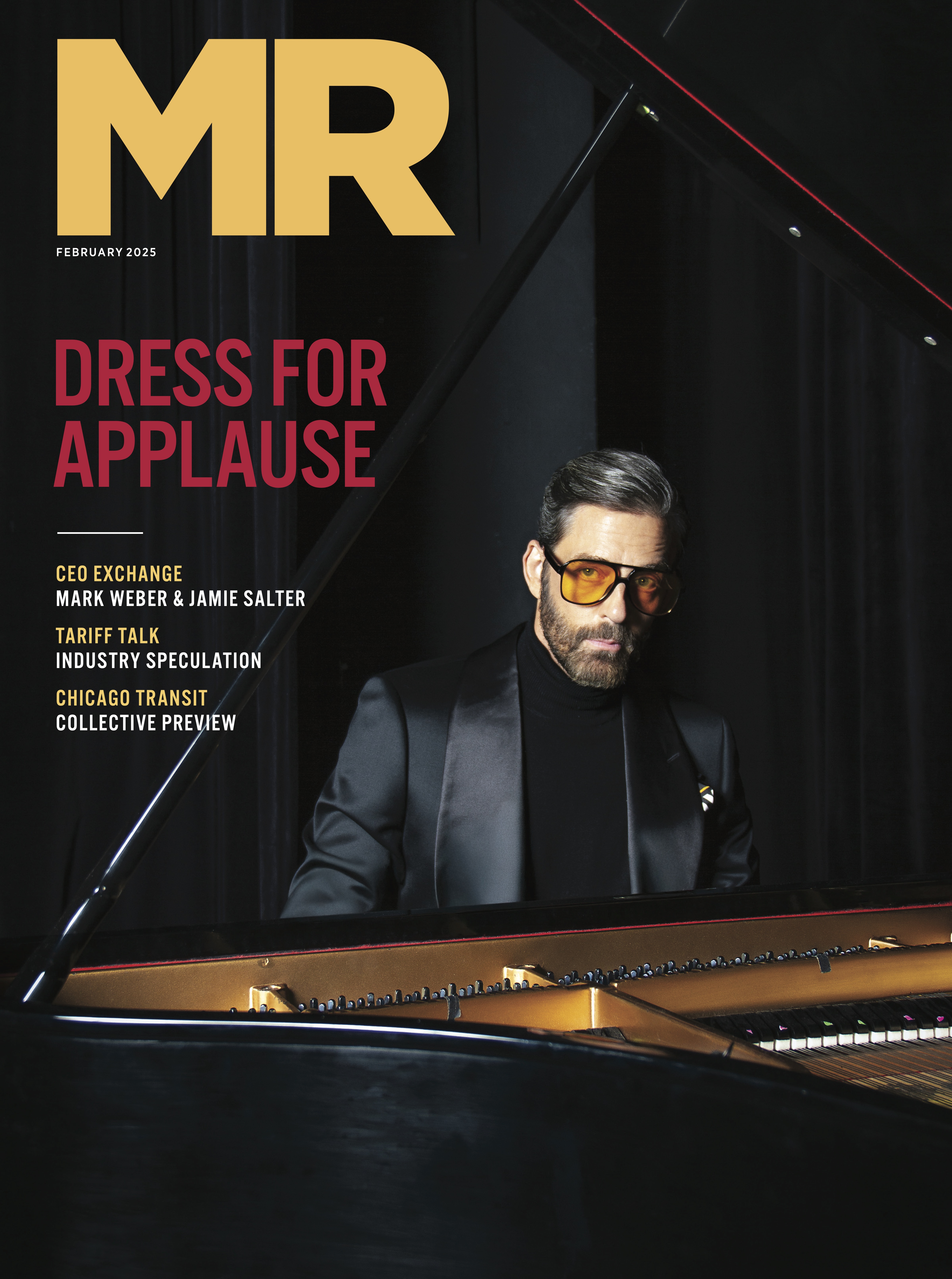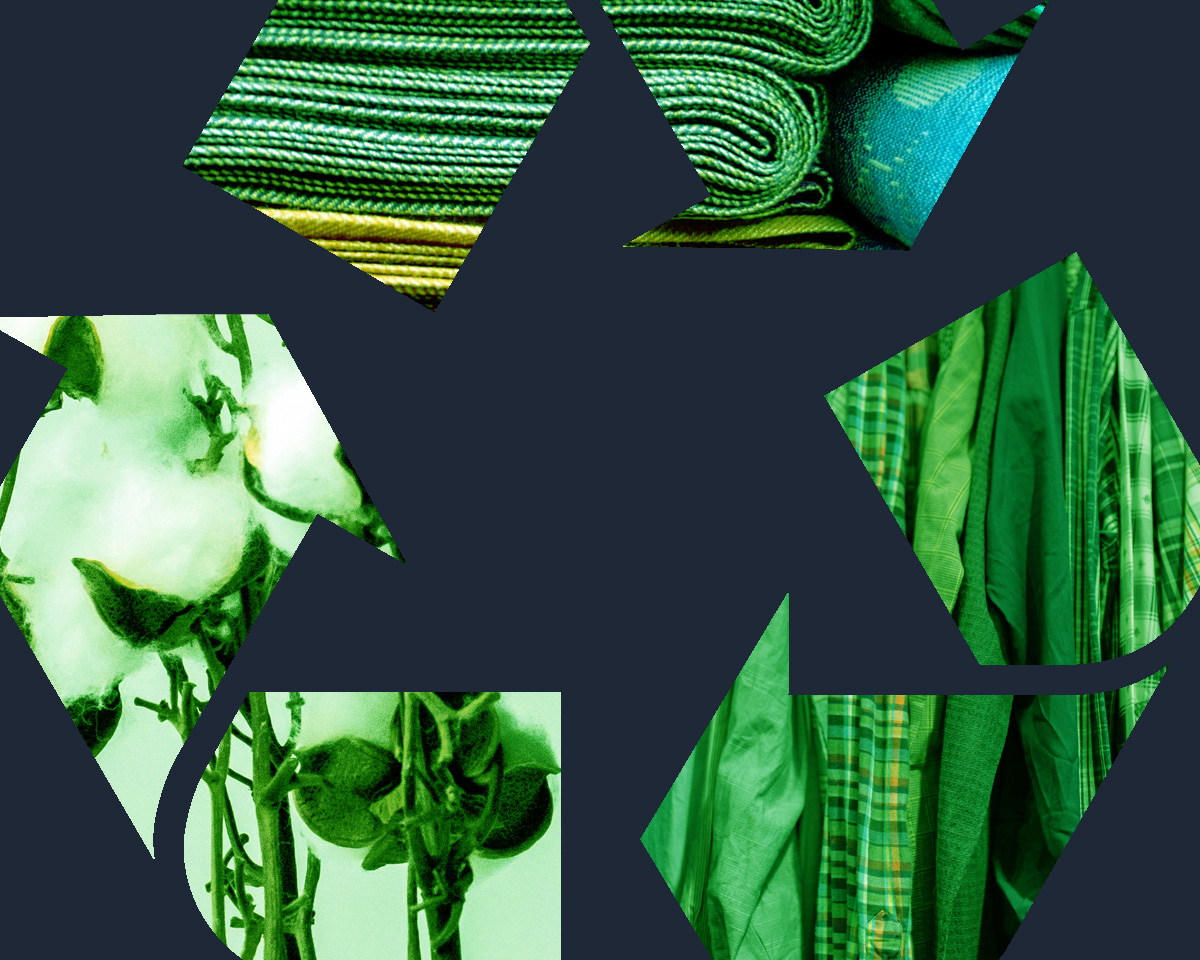FOR SUSTAINABLE FASHION, WORD OF MOUTH REIGNS SUPREME CREATING AN OPPORTUNITY FOR RETAILERS

Retail salespeople are perfectly positioned to be the front line of promoting sustainable fashion in the new climate-conscious market. Multiple studies show that word-of-mouth personal interactions are how shoppers make their choices, creating an opportunity for in-person sales professionals to provide this desirable guidance.
The issue | Is this a catch-22?
Yes, the industry is stuck in a catch-22 where the customer asks for a product without really knowing what they’re asking for. There is no consensus on what sustainable fashion means. The term is nebulous at best and includes the categories of sustainable, responsible, eco-friendly, green, recycled, upcycled, vintage, vegan, thrift, organic, and more.
What customers are coalescing around is a sustainable product that encompasses everything from organically-farmed cotton to making sure that animals whose wool is harvested are well-cared for, to creating organic dye-stuffs, more fuel-efficient factories, and providing child-care for working mothers—the list goes on and on. As a sustainable audit company, Hey Social Good CEO and Co-Founder, Dr. Cindy J Lin, put it in an interview for the Sourcing at MAGIC show, “Every single person has their own definition of sustainability, but now there is much more awareness of what the term encompasses. Not everyone understands it completely, but it’s getting better. It’s no longer a given that just because a brand offers, for example, organic T-shirts, the company is otherwise sustainable. We understand that there are different decision points and practices throughout the supply chain.”
The industry has made efforts to adapt itself to these terms, but certain brands have turned off consumers from trusting them; for example, BooHoo claimed to be energy conscious by dimming their website and H&M claimed to use sustainable fabrics that turned out to be polyester. This mistrust is warranted, given that the petroleum and plastics industry has attempted to shift the blame from pollution and waste to consumer behavior. The idea is, blame the customer for not recycling a product that should have been made with eco-friendly materials to begin with.
So, how do we best understand the new sustainable fashion customer? According to data from Legere & Kang, “By wearing sustainable fashion brands, consumers seek to demonstrate their commitment to environmental beliefs(EBs).” But this isn’t just about inward feelings; part of this is rooted in the outward expression through fashion choices. A study by Sae Eun Lee and Kyu-Hye Lee in the Journal Nature concluded, “It is crucial for ESBs (environmentally sustainable brands) to understand that they possess both fashion and conspicuous attributes. Therefore, these brands should incorporate these attributes into their fashion products. Specifically, they should ensure that their products reflect not only the latest fashion trends but also align with consumers’ desire for self-image conspicuousness.”
The data | What do the numbers say?
A lot! Let’s start with something simple. Google searches for sustainable fashion over the last 10 years have quintupled, spiking annually for Earth Day and Christmas.

According a study by Ruiz:
“Within the last five years, approximately 30% of consumers have increased their purchase of sustainable products, resulting in a 32% increase in the market share of these products.”
This is with the caveat that sustainable fashion currently represents 6% of total fashion sales.
Another study, this one from Meticulous Research on sustainable fashion market growth and another on sustainable consumer buying habits by the Journal Nature have attempted to calculate patterns within the space. What the Meticulous Research study revealed is that market growth for sustainable fashion is expected to increase more than 20% over the next 10 years to a total of nearly $50B. The study found that eco-conscious consumers have become less swayed by false and misleading marketing efforts (greenwashing) and are more reliant on word of mouth than on marketing gimmicks.
Sae Eun Lee and Kyu-Hye Lee found the same result. Shoppers have educated themselves beyond the PR metrics pushed by bad faith brands and have a more comprehensive understanding that sustainable isn’t just about a carbon footprint but includes fabric manufacturing, labor standards, and even international climate laws.
The brands | Is anyone doing it right?
Patagonia. According to Sustainability Magazine, Patagonia presents the strongest metrics in the sustainable fashion space, using 98% recycled material and sourcing electricity from 100% renewable sources while maintaining its top position in the outdoor apparel market. But they aren’t the only game in town. Their list of the top sustainable manufacturers includes Gucci (who they note has decreased greenhouse gas emissions by 50% and has fully traced all material supply chains), Chanel (who is on target to have its entire production pipeline on renewable energy by the end of 2025), and Hermes (who has targeted bringing all labor production in-house to reach better labor practice standards).

Other brands are putting in the effort as well: British Brands like Ettinger, Aramita Campbell (both Walpole members,) Sunspel, and Trickers all have been moving to examine their supply chain efficiencies and make design decisions around the lifespan of their garments.
In the greater market at large, the US and Europe are both moving to expand EPR (Expanded Producer Responsibility) legislation and the 2nd largest apparel exporter to the US, Vietnam, passed its own EPR in 2021. While it failed, similar legislation was proposed in the 3rd largest US apparel exporter, Bangladesh, in 2020. Additionally New York has proposed its own sustainable fashion legislation which Douglas Hand detailed in our November issue, “would require any fashion company selling in New York with global revenues of $100 million or more to provide a transparent and comprehensive report to the Attorney General on their energy, greenhouse gas emissions, water, plastic, and chemical management.”
While looking at where these legal efforts have succeeded and failed, the future of this legislation is entirely unknown given the Trump administration’s economic approach. No one is certain how the US tariff situation will affect global distribution changes, buying habits, and whether any of that will have an effect on sustainable legislation around the world. However, Trellis (a sustainable watchdog group) speculates that the tariffs could have a back door benefit to sustainable shopping by increasing prices from China, causing brands like Shein and Temu to raise prices and driving customers to goods sourced in countries with more sustainable industrial standards.
The front line | Who do customers trust?
You—the retailer! It’s this common point between these studies that makes retail experts the new front line of ethically conscious shopping. The monetization of social media influencers as well as the inability for one-on-one interaction has this consumer looking for a face-to-face authority that they can vet and trust.
The studies reveal that 68% of sustainable fashion shoppers trust word of mouth advice over any other information vector. The Meticulous Research study points out that while Europe currently leads in this shopping sector, the US is growing fast. It further points out that interest in fabric production and labor practices is the top trending issue for these consumers.
But when it comes down to fashion, customers walking into a store looking to make a sustainable purchase, we know they aren’t taking the brands’ word for it. So train your sellers well, as they might be the ones who shoppers now turn to for guidance.


